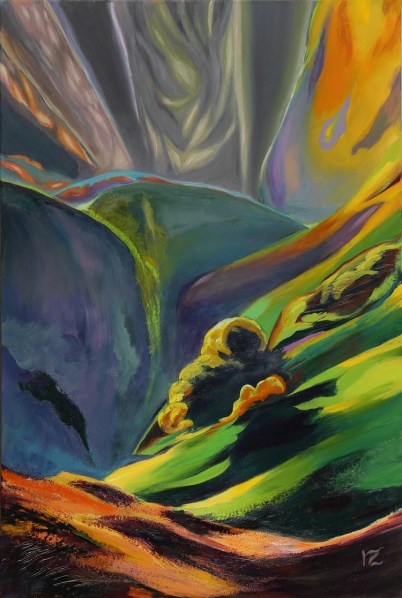Tags
classical art, classical beauty, classical painting, grotesque in art, Hegelian idealism, ideal proportions
Truth as discoverable by the mind is a central impetus of Hegel’s philosophy. Beauty is expression in the moment of divine consciousness or spirit, finding its highest realization in the human form. One can see where this fascism of thought would buttress authoritarian regimes.
I use the term fascism to mean that mindset that leads towards a centralized process by which truth and beauty are determined. Variances, or deviances, that are incompatible with the centralized ideals are excluded by the process itself, with exclusion enforced in more or less aggressive physical repression.
We know that the Catholic church, in the Renaissance, sponsored those who thought of the human body as a language for divine ideas, for example, Michelangelo’s ceiling. This church is fascist in doctrinal enforcement, albeit with a more rare and sporadic expression of violence than political fascism. Religious control was exerted by other means, mainly political and organizational excommunication.
Did Greek artists, having been pointed out as having attained a high-mind instantiation of beauty in this sense, serve some flavor of fascist regime? It would be an interesting exercise to compare the idealism of Greek art, especially sculpture, with the fascist tendencies of governments at the time. Was Greek democracy controlling artistic expression?
Abused by fascism as it is, Hegel’s idealist concepts do have a certain appeal to the more democratically minded as well. Of course we can note on the other extreme is Marx’ appropriation of Hegel’s alleged notion of progressive dialectic for his own communist purposes. I say ‘alleged’ because it has been pointed out that Hegel’s dialectic, or triads, were internal to ideas, and not a conflict of external forces with each other (French Revolution followed by Reign of Terror, followed by republican government) as developed by Fichte. It is evident, in any case, that Hegel’s thinking is foundational to various schools of thought.
What I find appealing from Hegel is this notion of beauty as an expression of Spirit. But I’d like to take this fascination with the human form as an expression of beauty out of any context of historical progress of mankind.
With an ever diminished planet that has lost more than 50% of its species in the last 50 years, a planet that has ever diminishing natural resources, and that is becoming hostile to human life ‘in the open’ free from bad air, by now we’ve discovered that the notion that humanity as irresistibly progressing forwards towards a higher understanding of truth is funny, if not tragic. We can just look around at the chaos and degeneracy of politics to consider the state as a guarantor of anything aspirationally higher in the realm of being as simply silly.
By contrast, some corporations are doing more to elevate our humanity in the interest of a caring corporate culture, as has been the transformation of Microsoft. The early days saw a zero sum game in corporate culture that pitted employees against each other because come review time, people were ranked on a curve and the lower percentages were systematically managed out. Today we have training in Diversity and Inclusion (D&I), encouragement to show ‘grace’ to others in the time of pandemic, to be an ‘ally’ to those who don’t have a strong voice, flexible schedules to accommodate homeschooling parents, for managers to learn to have moments of listening in every meeting, and more. Not all corporations take a high view of humanity, yet it seems that those that do can still perform well because a good view of humanity is good for business.
Regardless of any of these contexts — whether toxic Republican vs. Democrat politics fueled by a division-hungry mass media, or the comfort of the Noble Corporation — on its own, in the moment, works of great beauty from the past still have an appeal in their own right. We only have to wander the classical sculpture gardens of the Louvre with the collections of figures totally disconnected from their original context for us to nevertheless marvel at the craftsmanship and beauty expressed. Beauty still touches artists as a response in the moment, and should be judged as that. Such art can be a satisfaction of higher ideals, an allusion to a state of being. The partial materialization of an aspirational state can be gratifying.
One does not have to accept the Humanist view that humanity is the center of the universe to affirm beauty. Modern theories of consciousness are rejecting the idea there is no consciousness in the sun, for example (as Hegel affirmed), or in animals (as Heidegger affirmed). Celebrating human beauty is not necessarily synonymous to anthropocentricism. We can apply the same idealist techniques to animals, and have compassion on them.
As an artist, therefore, I want to defend the option to render classical forms in a new way, and not preclude that purely on philosophical or ideological grounds. Such renderings are not an endorsement of a fascist regime. Nor should these forms necessarily be an expression of hostility to the principles of Diversity and Inclusion.
Painting a woman with a narrow waist and tight lines on curvy hips does not have to be interpreted as hostility to plus-sized women. Plus-sized models are still models, i.e. a standard of beauty. In fact, I find it ironic that the plus sized women shown in underwear ads on TV have their own lovely proportions, albeit in larger measures than the anorexic models of the past. Not shown are those whose waists are several times larger than their hips, the chronically mega obese, or those who have absolutely no seemly parts. Diversity & Inclusion is an extension of boundaries, not the lack of boundaries on subject matter to be included.
Advertisements of underwear or breast cancer awareness still strive to find a link to beauty because the viewer’s minds are looking for that link. The lovely colors and lighting that infuse the ads are a giveaway themselves. All models are to be shown in a pleasing light. The glorification of the completely grotesque is the realm of kinky fringe groups.
With all our guilting introspection about beauty, the objectification of women, the sexualization of nipples, affirmative action in favor of the obese, etc. are we putting a damper on freedom of expression? Those of us who would render the ideal find ourselves bound up with questions about how such works would be received, and where, if anywhere, they can still be exhibited.
Now in contemporary art we’ve seen a resurgence of classical aka ‘realist’ painters and painting schools. One only has to Google ‘classical atelier’ to see centers all over the US, Europe and other parts of the world. A survey of the output shows that artists are inspired by all shapes and forms of humanity, not just the classical notions of beauty. Thus classical techniques are applied to all forms, ideal or not. In a way, artists, with their endless curiosity about form, light and rendering, have been leading the way in inclusiveness. Within these art schools, curiosity into the ‘divine’ reflected in the forms of certain fit models is obviously not frowned on. It’s a welcome treat.
In prudish America, there has always been a diminished market for the public display of nudes in art. I suspect that emphasis on D&I will exacerbate that exclusion even among the liberals, those who traditionally were not prudish. Is curiosity about idealist beauty now politically incorrect for artists? How should those of us who wander into such subject matter think about it? Let me give you some positive ideas about how I approach the rendering of an idealized beauty, such as a female nude.
Having participated in many life drawing sessions over the years, as an artist I’ve learned to respond to form and to look for underlying structures. Knowledge of anatomy is critical to being able to explain visually why certain forms appear as they do. Understanding of direct and reflected light is important, as is a deep understanding of local color on the skin, and the temperature of light. All of these skills are applied regardless of the body type of the model in front of us.
The pleasure of working with a well defined, athletically toned model, is that there is little guesswork about the placement and interaction of muscles and bones. If you know your anatomy, for example, you can see that the quadriceps extensors are tensed because a knee is raised, and that angle of the clavicle is diagonal because the raised arm has pushed it upwards, etc. The goal of the artist is to provide a visual explanation to the viewer of what’s going on with the forms, given that there is limited perspective on a 2D surface. Anatomy that provides clarity is more aesthetically appealing that a formless blob of flesh.
Drawing an idealized figure goes beyond the simple observation and understanding of anatomy to the creation of poses that aren’t strictly speaking standing before us. With deep understanding of anatomy, you can master the orchestration of figures in a painting. Thus the figure becomes an expressive language for masters and illustrators alike.
What’s more, there is creative delight in determining the relative proportions of muscles and body parts based on functions attributed to the figures. There’s a certain act of personification in the ascription of attributes and capabilities to the figures and critters that populate our canvases. Just like in the real world where ‘bombshell beauties’ do exist, some subset of the figures in our imagined spaces are going to be ideal beauties.
There is also the freedom that one can have by invoking a ‘model’ in your canvass that could not be engaged or found in real life. With elevated skills, you are not limited by the population of real people willing to model. This sense of freedom and dominion over what can appear in a flat surface is magical, empowering and delightful to creators and viewers alike. In short, the expression of artistic imagination cannot and should not be constrained by ideological trends, be it D&I or fascism.
This doesn’t mean artists don’t have a social obligation to support a sustainable society. I believe we do have a moral imperative given the state of humanity on this planet. Thus, for example, art that espouses racial hatred or endorses the excessive consumer lifestyle should be judged from the perspective of sustainability. I don’t see how fabricated personas rendered in mythical art work should be shunned solely based on their ideal proportions. Idealized proportions in figures are still absolutely to be endorsed because they connect us to that core affirmation of beauty that all of us seem to have and need.
— Roy Zuniga
December 2020
Duvall, WA



